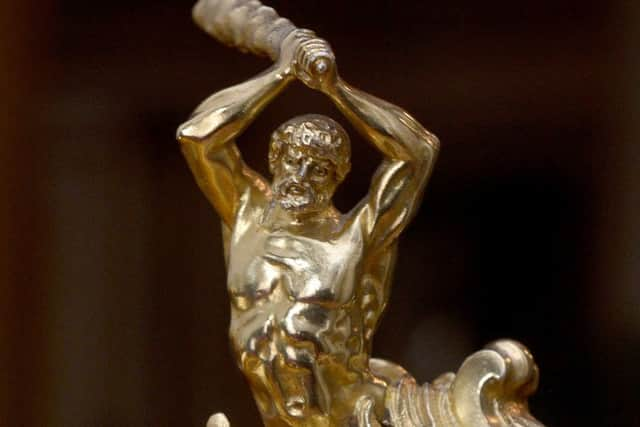Queen Victoria’s font to be used for Princess Charlotte’s baptism


It was made by silversmiths EJ and W Barnard in 1840 for the christening of Queen Victoria’s daughter, Victoria, Princess Royal, the following year.
Crafted out of solid gilded sterling silver, weighing more than 21lbs (approximately 10kg) and standing 17in high, the font is festooned with lilies and ivy foliage around the rim, while the main bowl is a large lily bloom - hence its name.
Advertisement
Hide AdAdvertisement
Hide AdThree large cherubs playing lyres are near the base of the scrolled sides, and the font also bears three Royal coats of arms - those of Prince Albert with The Garter Motto, The Princess Royal and the joint coat of Victoria and Albert, Princess Charlotte’s great-great-great-great-great-grandparents, who were married in the Chapel Royal in 1840.


Although secular images, the lilies and cherubs were deemed appropriate as lilies were considered to represent purity and water lilies were associated with new life.
The font, which will have been brought to the Church of St Mary Magdalene in Sandringham from its usual home at the Tower of London, where it is shown as part of the Crown Jewels, has traditionally been used for royal christenings, including all of Queen Victoria’s children.
It was used at the christenings of all of the Queen’s children and her grandchildren - except Princess Eugenie - including Princess Charlotte’s father William and her older brother, George.
Advertisement
Hide AdAdvertisement
Hide AdMartin Swift, the Crown Jeweller who is in charge of the Crown Jewels at the Tower of London, said Queen Victoria commissioned the font to avoid a distasteful association with the Charles II font, which had previously been used for Royal christenings.
He said: “Charles II insisted on having all his children baptised using the Charles II font, but all his children were born out of wedlock, which is why when he passed his brother James became king.
“She didn’t like that association, so ordered the commissioning of the Lily Font.”
Alongside the Lily Font at Princess Charlotte’s baptism will be a christening ewer, made of solid silver and similarly gilded.
Advertisement
Hide AdAdvertisement
Hide AdDating from 1735, it was produced by George Wickes for the christening of George III - though originally for the christening of Frederick, first-born of George II, who died before he could take up the throne - along with a christening basin, made because George I would not let George II use the Charles II font for his son’s baptism.
A tulip-shaped pitcher, the ornate handle is topped by a figure of Hercules holding a large club and slaying the hydra, the second of his 12 labours, created to symbolise the triumph of Christian virtue over vice.
The base of the ewer, which is slightly taller than the font, bears the Royal coat of arms flanked by the heraldic lion and unicorn.
An inscription beneath the lip of the ewer describes how it was used for the christening of George III in 1738 and also his son Prince Alfred, in 1780.
Following Royal tradition, the water used for Princess Charlotte’s christening will be holy water from the River Jordan, where it is said Jesus was baptised by John the Baptist.